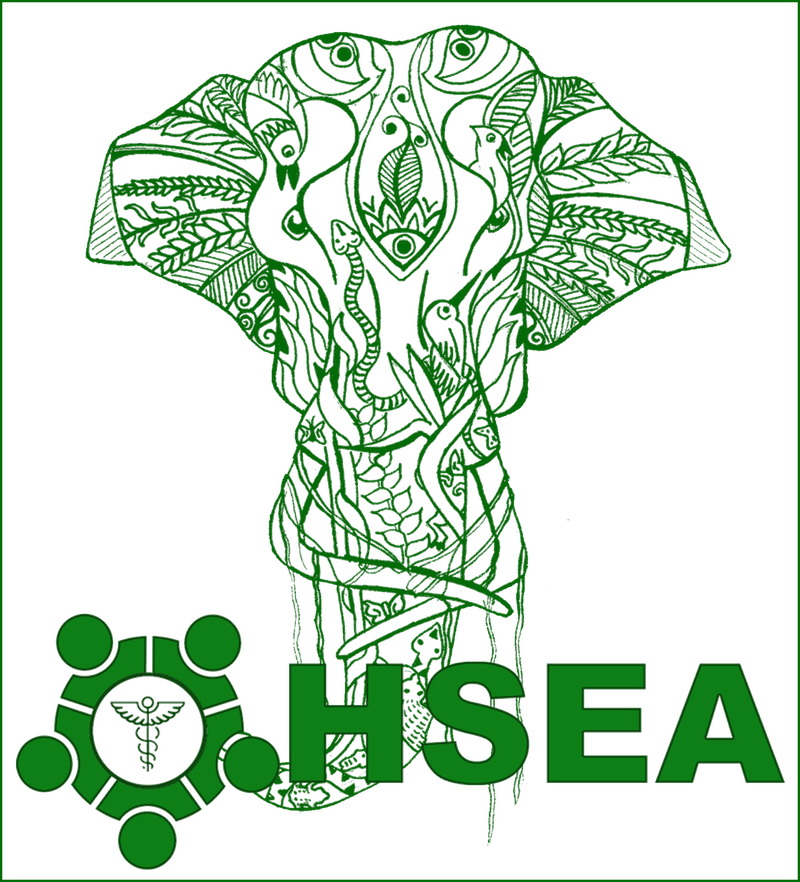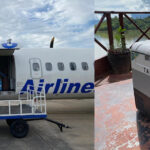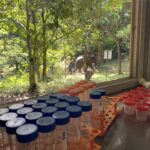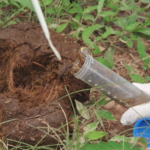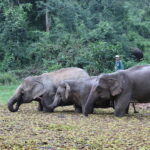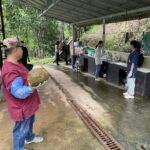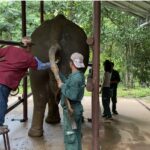Zoonotic Disease in Elephants in Laos
PITCH
INTRODUCTION TO THE PROJECT
In Laos, as well as in the rest of South-East Asia, Tuberculosis (TB) and drug resistant TB represent a significant public health threat, threatening elephants and other animals. As in Laos, owning an elephant is still a conventional practice, the constant proximity between the elephant and its mahout (someone who owns or works with an elephant) increases the chances of diseases transmissions in both directions, notably of TB. This has already been documented among keepers and elephants in zoos and sanctuaries across the world. Mycobacterial culture from collected sputum, accompanied by chest x-rays are used for the diagnosis of active TB in human beings ; collecting trunk washes or blood samples for diagnosis in trained elephants are used)
However these techniques are not applicable to untrained elephants. Therefore, a diagnostic method based on non-invasively collected samples would be a more suitable approach. Alternatives exist today to detect TB in fecal samples from sun bears, with active disease.
The main objective of this interdisciplinary pilot project is to determine, by adopting a One-Health approach, Mycobacterium tuberculosis (Mt) prevalence and antibiotic resistance among captive elephants (used for timber extraction or in the tourism industry), their mahouts and domestic animals to evaluate the risk of TB emergence at the human-animal interface, in Laos.
PROJECT IN ACTION
More specifically, we aim to determine Mycobacterium tuberculosis (Mt) prevalence and antibiotic resistance among captive Asian elephants and their mahouts to better evaluate the risk of TB emergence at the human-animal interface in Laos.
Task 1: May 2022: Field missions and sampling
– Elephant fecal samples has been collected in Tongmixay district and at the Elephant Conservation Center (ECC) (Sayaboury district) and sent to the Institut Pasteur du Cambodge, for analysis.
– Sputum and/or fecal samples for each mahout with suspected TB infection has also been collected and sent to the National reference Laboratory for TB in Vientiane (CILM) for culture, molecular identification and drug susceptibility testing
Task 2: June-October 2022: Laboratory work and analyses
Adjust, improve, and validate the technique of TB detection in elephant fecal samples. Nucleic acid-based amplification tests was carried out to detect Mt in human and elephant stools by
1) Using the GenXpert Mycobacterium tuberculosis (MTB)/rifampicin (RIF) diagnostic test allowing for the detection of Mt and RIF resistance;
2) Extracting DNA, real-time-PCR amplification and detection of IS6110 or rpoB genes, followed by DNA sequencing and phylogenetic analyses. Standard PCR and sequencing reactions is performed for positive cases in order to confirm the specificity of the real-time PCR results.
Task 3: In parallel, the team has been working on feces samples as controls from sun bears in Cambodia.
Between 2009 and 2017, Tuberculosis, caused by Mycobacterium tuberculosis, was confirmed in 19 sun bears (Helarctos malayanus) at a wildlife rescue center in Cambodia, where the bears are managed by bear conservation and welfare NGO Free the Bears.
Impact of the project :
– Scientific impact: The validation of a reliable, non-invasive diagnostic approach of disease detection and antibiotic resistance is the first step to better understand Mt prevalence, circulating TB profiles, and potential of zoonotic transmission among humans and animals.
– Economic impact: TB infection has a direct personal financial cost due to lost work-days; Early TB detection, in hand with prompt medical
treatment or preventive confinement, would improve working capacity and productivity (for both humans and elephants).
– Impact on species conservation: reducing infections in captive elephants will protect wild elephant populations who are exposed to the
disease primarily in the mating season.
– Social impact: Sharing knowledge on TB risks with the mahouts will empower them in their role of disease sentinels and will elevate them to a more pivotal role for the preservation of their health and that of their elephants.
- Transport by boat and plane of the samples
- Installing a sampling station at ECC in Laos
- Collecting samples directly on the ground
- Elephant mothers and daughters heading to the water at ECC
- Collecting samples directly at the sampling station
- Preparing an elephant for sampling
NEXT STEPS
- This pilot project will allow us to validate the detection of Mycobacterium tuberculosis in non-invasively collected elephant fecal samples thanks to the diagnostic optimizations conducted on the captive infected sun bears from Cambodia, and extend the sampling to the existing 450 domesticated elephants working in Laos, in the future.
- In addition, domesticated elephants in Southeast Asia regularly interact with wild elephants inhabiting nearby forests. It will be
therefore important in the future to extend the fecal samples collection and analysis to the wild counterpart. - This disease also threatens other animals, such as the polar bear (Helarctos malayanus). A memorandum of understanding was recently drawn up between the NGO Free the Bears, the IRD and the Centre d’Infectiologie Lao Christophe Mérieux (CILM) in order to formalise and establish a permanent collaboration concerning the routine diagnosis of tuberculosis in the population of rescued and captive bears in Laos. This agreement will be extended to the Elephant Conservation Centre in Sayabury province, which monitors captive elephants as well as releasing pachyderms into the wild. The integration of this animal component into the CILM’s diagnostic offering is important for the future of this institute and its visibility as a team capable of tackling the many aspects of One-Health.
- The potential for transmission of tuberculosis between elephants and humans is also being studied at Chiang Mai University. Thanks to the international PRESTO (Protect-dEtect and STOp) laboratory, coordinated by two researchers in Thailand and the ELAOS PI in Laos, we have been able to integrate and extend this research topic beyond the Laotian border. In addition, the advice of our current partner, the Institut Pasteur du Cambodge, has been and will continue to be a valuable collaborative and scientific support in the fight against the spread of tuberculosis in the animal kingdom.
- We anticipate publishing one article in a peer-reviewed journal, a second one accessible to the general public and a 5 minutes video to document the pilot project and the research perspectives adopting a one health approach.
ELAOS ON THE WEB
Vidéo supplémentaire sur le projet ELAOS au Elephant Conservation center
CONTACT
Project leader : Sabrina LOCATELLI (sabrina.locatelli@ird.fr)
Associated researchers :
PABORIBOUNE Phimpha (phimpha@ccm-laos.com)
CHENG Sokleaph (csokleaph@pasteur-kh.org)
BELEN LOPEZ PEREZ Ana (biologist@elephantconservationcenter.com)
SAYASONE Somphou (somphou.sayasone@yahoo.com)
Countries involved : Laos and Cambodia
